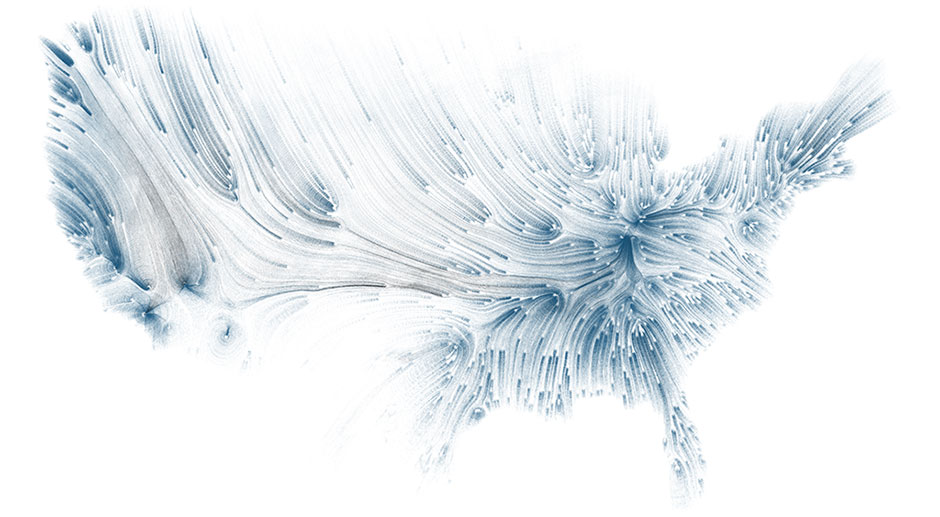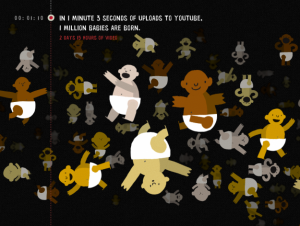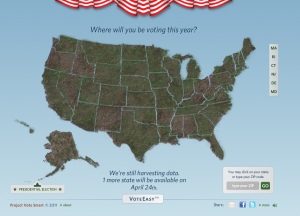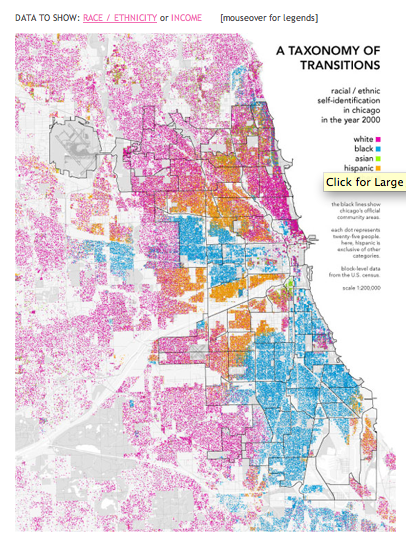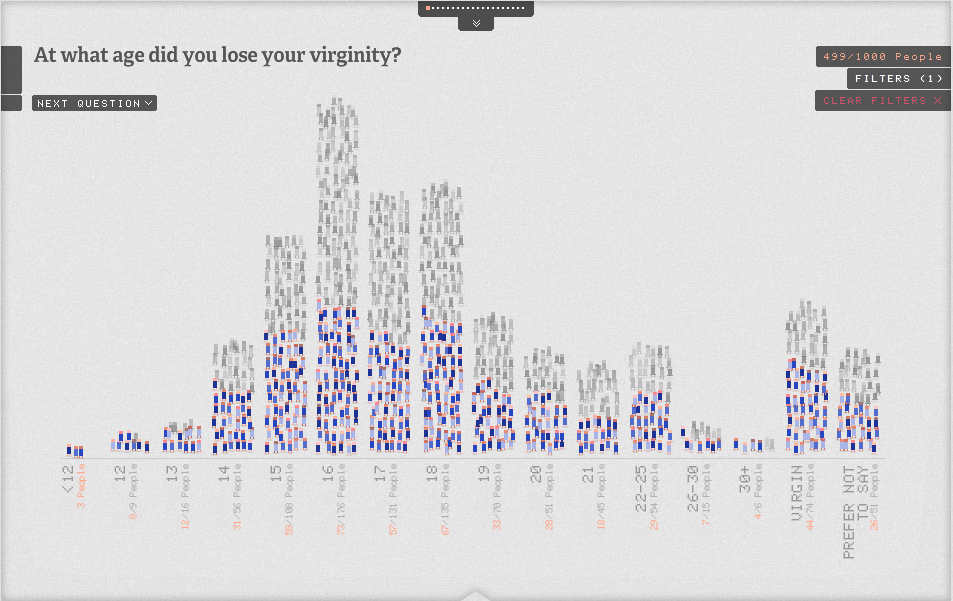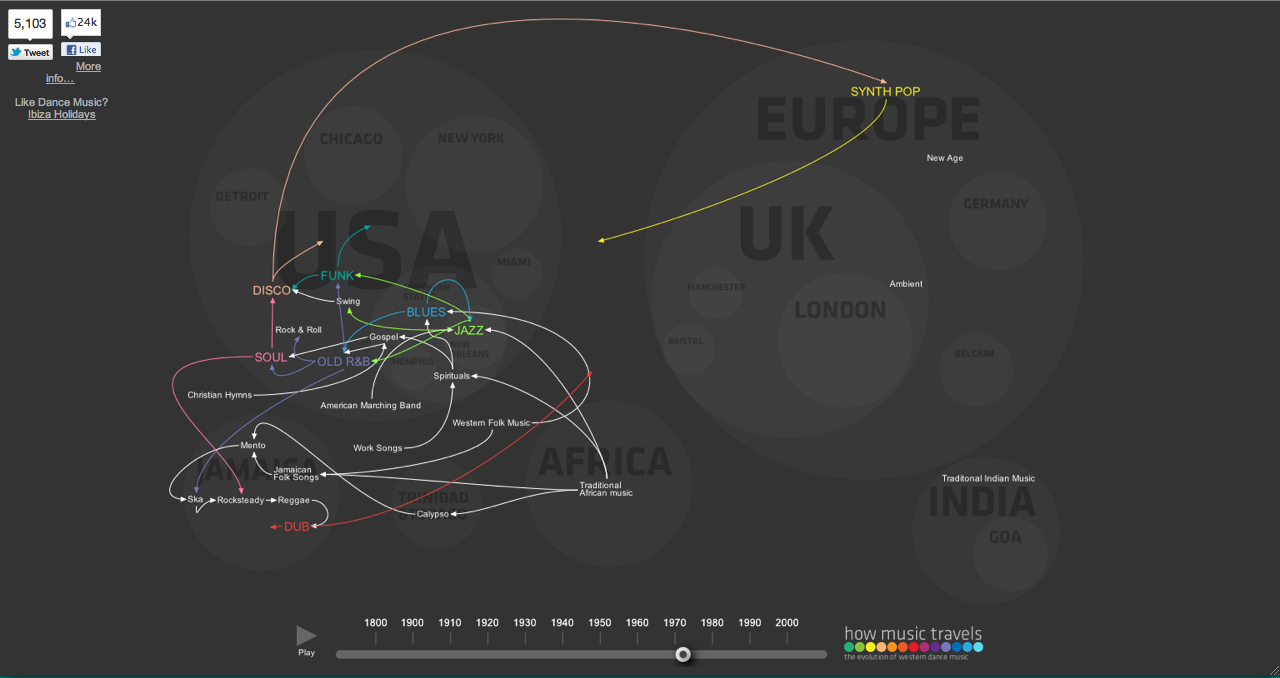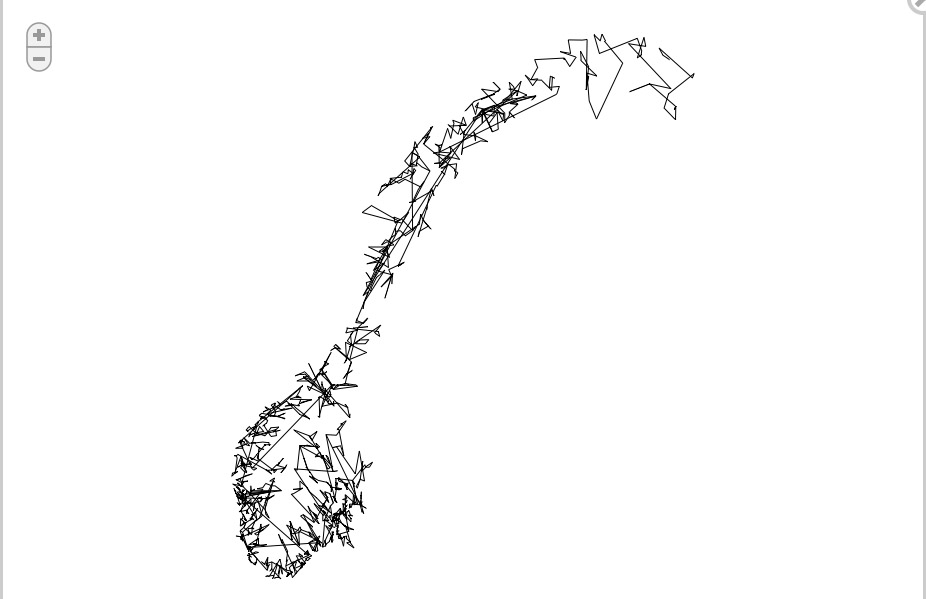KaushalAgrawal – Looking Outwards – 2
High Line Record
[vimeo=https://vimeo.com/6939976 width=640 height=400]
High Line Record or also known on the internet as the Sound of New York City is a visualization by Mark Edward who has visualized an area of New York. The area is categorized by the type of business(bars, pubs, cafes, nightclubs, parks etc.) and their daily working hours. The distance of the business is the radius from the center and the arc denotes the time for which the business is open (top being 12am and the bottom being 12pm). To supplement, he takes recordings from the places and adds to the visualization. The interesting thing is that in one glance, one can figure out what kind of businesses are there in the vicinity with their working hours and noise level to expect. I wonder if there was a way to represent the intensity of the noise as an overlay graph, or how busy these areas were.
Social Memories
[youtube=https://www.youtube.com/watch?feature=player_embedded&v=5vkQGSOsZRc]
This is a visualization of the facebook profile by Nicholas Felton. It is essentially like the facebook timeline. The visualized data is reported in form of a 28 pages book with all the events and statistics compiled together. It can be accessed as a facebook book and it highly interactive. The beauty of the project lies in the simplicity of thought combined with interesting statistics which would not occur to an average facebook user, which makes the experience compelling.
